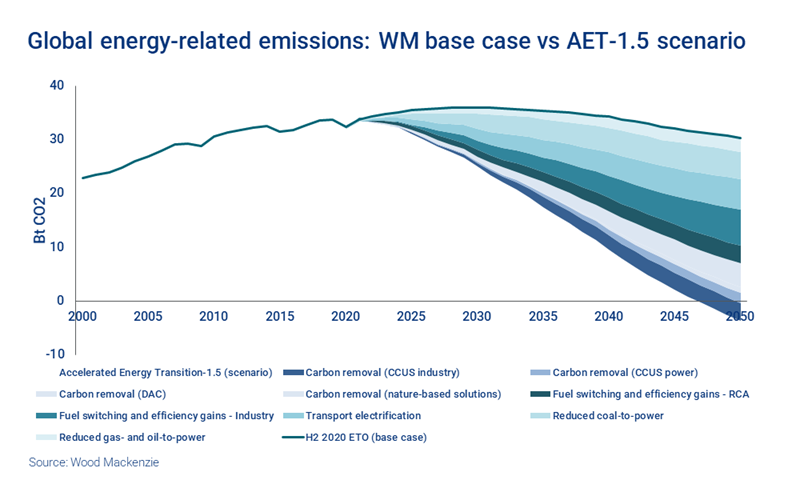KeyFacts Energy: Commentary l KeyFacts Energy Industry Directory: Wood Mackenzie
The latest IPCC report calls for raised climate ambitions, but what are the real-world implications?

Prakash Sharma
Head of Markets & Transitions, Asia Pacific, Wood Mackenzie
The recently released Sixth Assessment Report of the Intergovernmental Panel on Climate Change makes for stark reading. One of its key conclusions is that limiting human-induced global warming to the target set by the Paris Agreement requires increased ambitions, including reaching net zero CO2 emissions before 2050. Yet so far, despite ambitious targets from some countries, the reality on the ground is very different.
The emissions challenge is monumental
Achieving net zero needs a sustained, collaborative, global emissions reduction of 1.2 billion tonnes every year for the next three decades. But while many countries have set net-zero 2050 targets, no major economy is on track to meet the 45% reduction in annual emissions needed by 2030. Meanwhile China, which emits 35% of global emissions, has only committed to peaking its emissions by the end of the decade.
Hydrocarbon dominance means emissions will go on rising
In 2020, 80% of global primary energy supply came from hydrocarbons. Solar and wind provided less than 5%, with nuclear, hydro and biomass supplying the rest. A 1.8 billion tonne reduction in CO2 emissions in 2020 was just a pandemic-related blip - with too little renewable capacity to meet renewed demand growth emissions are going to rise in the near-term, not fall.
Low emissions technologies can deliver on temperature goals
We have mapped where emissions reduction could come from — including many technologies which already exist. In Wood Mackenzie’s Accelerated Energy Transition (AET) 1.5-degree scenario, by 2050 nearly 44% of emissions reduction would come from electrification and efficiency gains, 33% from fuel switching and feedstock change, and 23% from carbon removal technologies (CCUS, direct air capture, and nature-based solutions). You can see the contributions of different reduction measures in the chart below.

Market incentives need to improve
The adoption of technologies to decarbonise the energy economy is slow due to a lack of effective carbon price mechanisms, direct incentives or regulation. Currently only 36% of global energy emissions are covered by a carbon tax or an emissions trading scheme and average carbon prices are too low to mitigate the costs of development and adoption. International cooperation on carbon markets would be a major driver of progress towards the Paris Agreement target and is expected to be a key theme at COP26 in Glasgow in November.
The weakening of natural carbon sinks is a growing concern
A particular concern from the IPCC report is the weakening of natural ocean and land-based carbon sinks, which have historically helped balance the carbon cycle. We expect there will be as much scrutiny of the stewardship of these in future as of energy-related emissions. Don’t forget to fill in the form to access the report extract, where you can find out more about this issue and gain deeper insight into how net zero CO2 emissions can be achieved.
 KEYFACT Energy
KEYFACT Energy